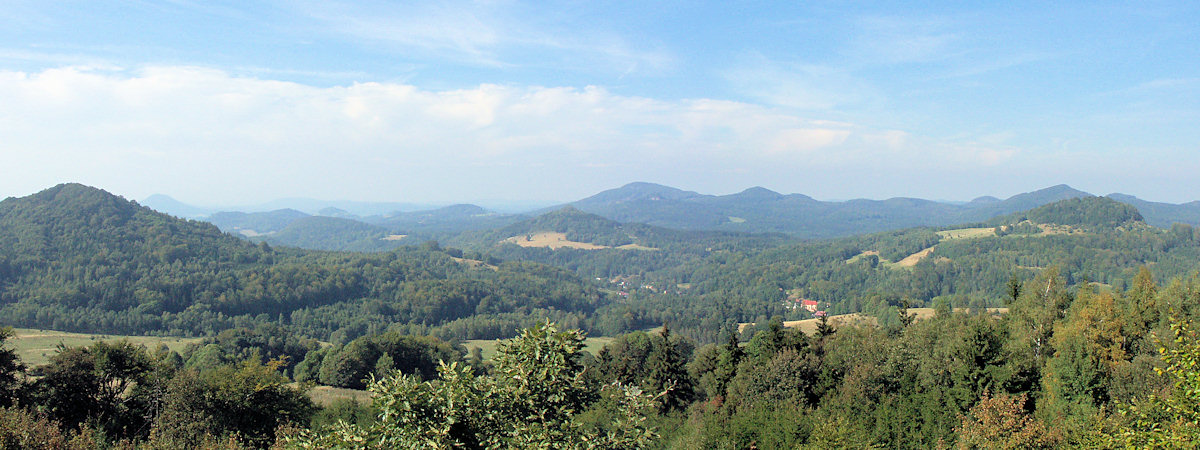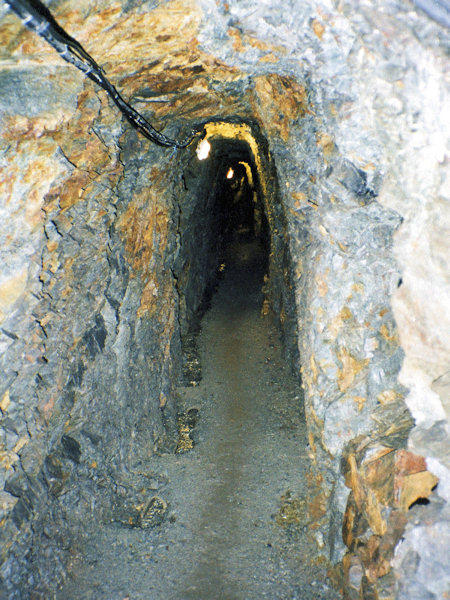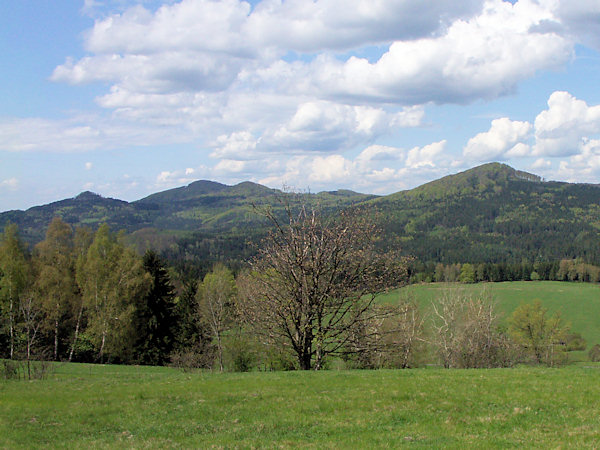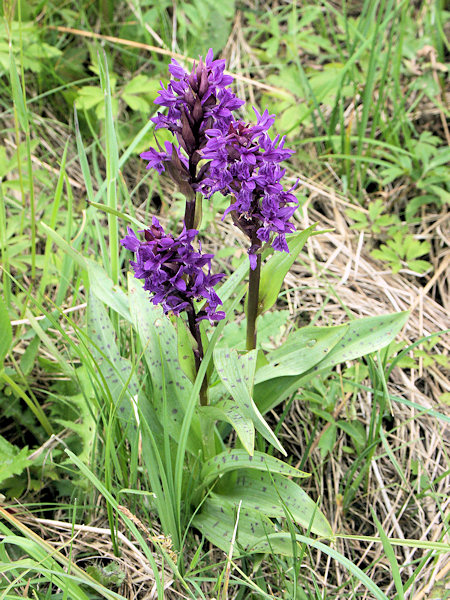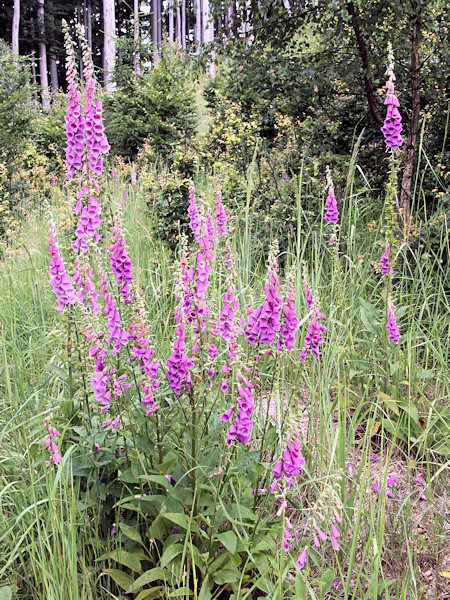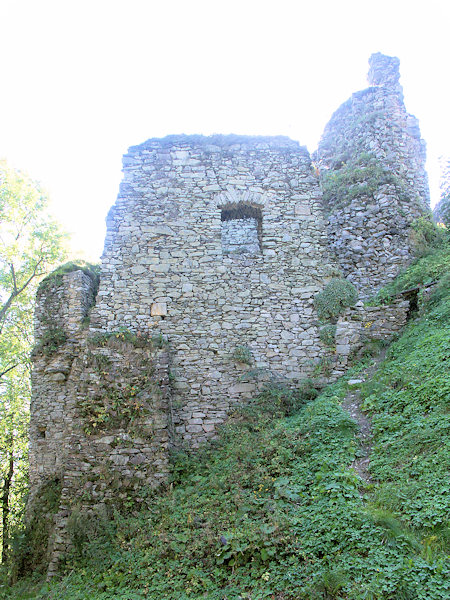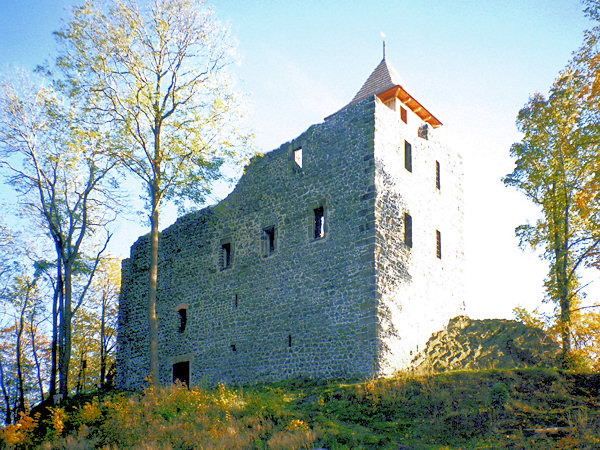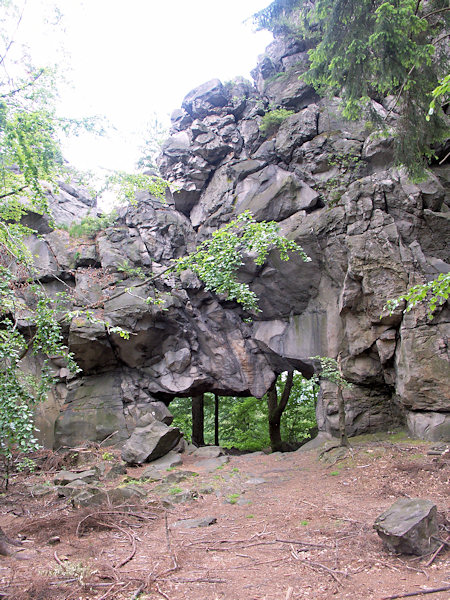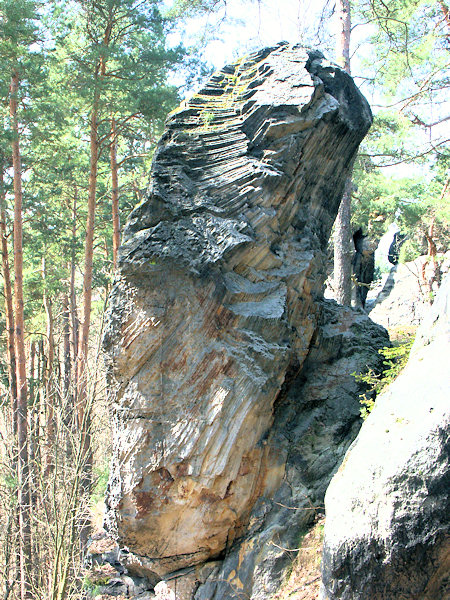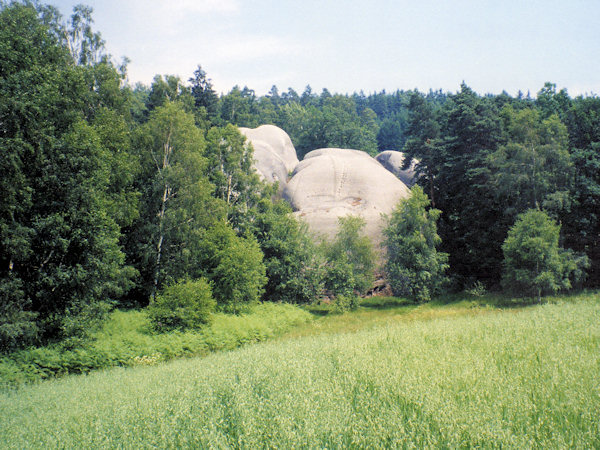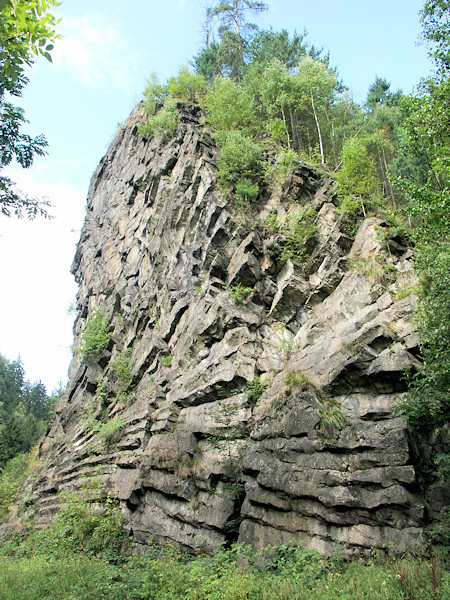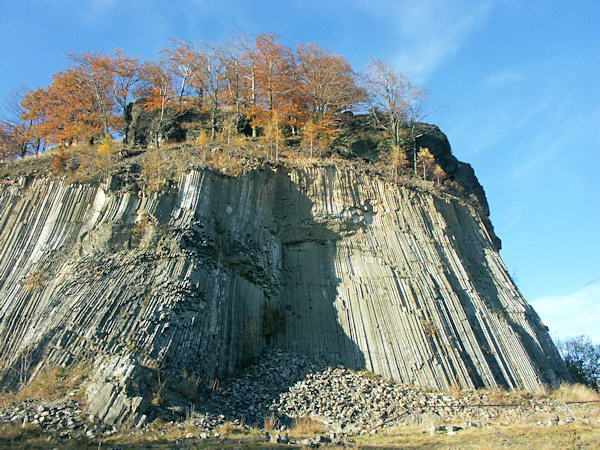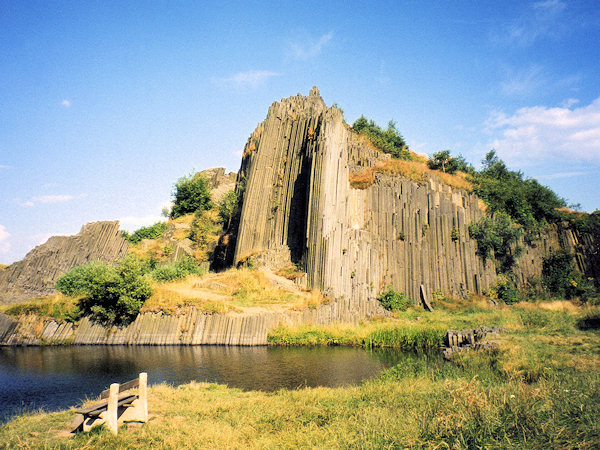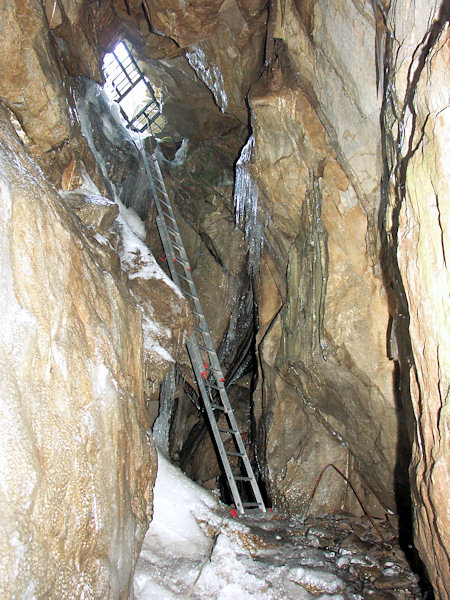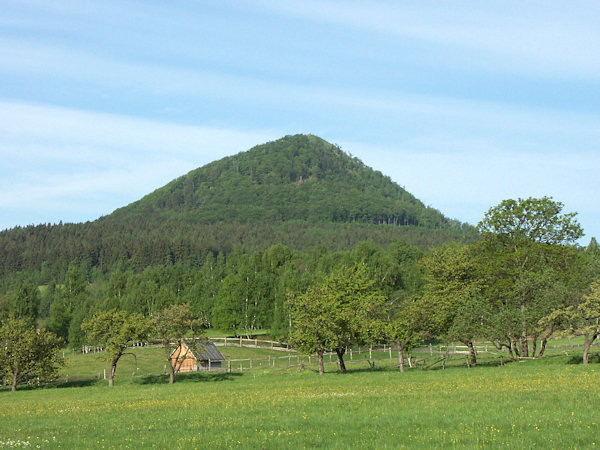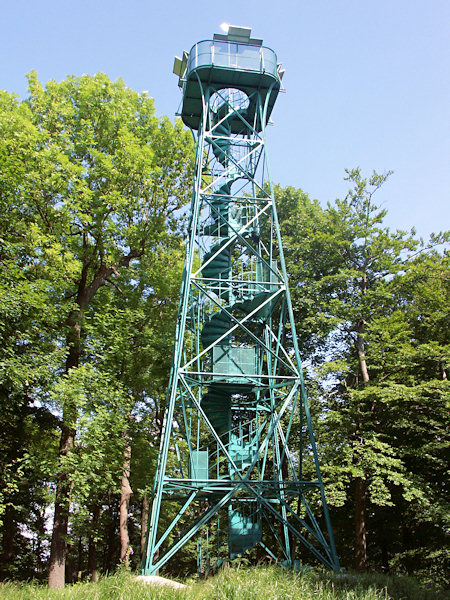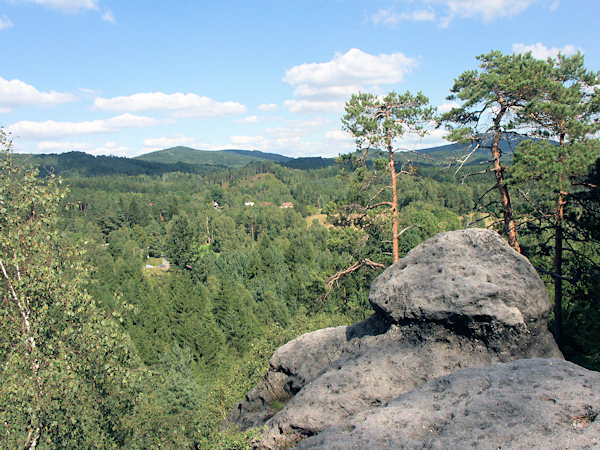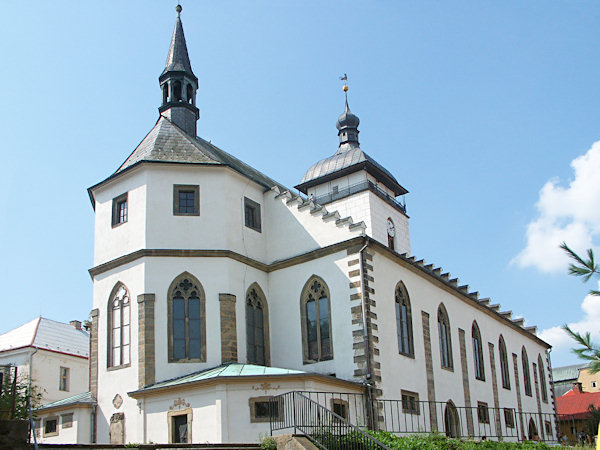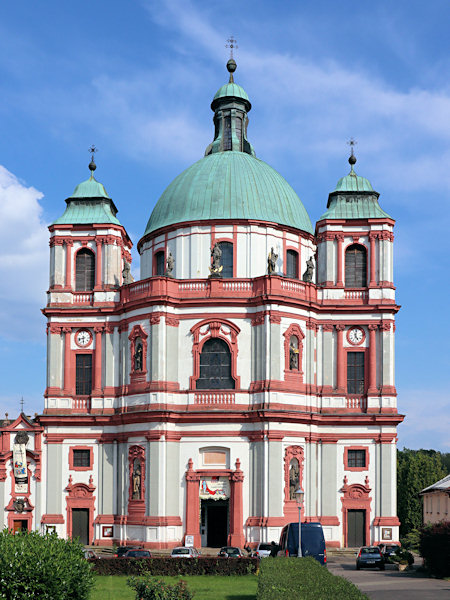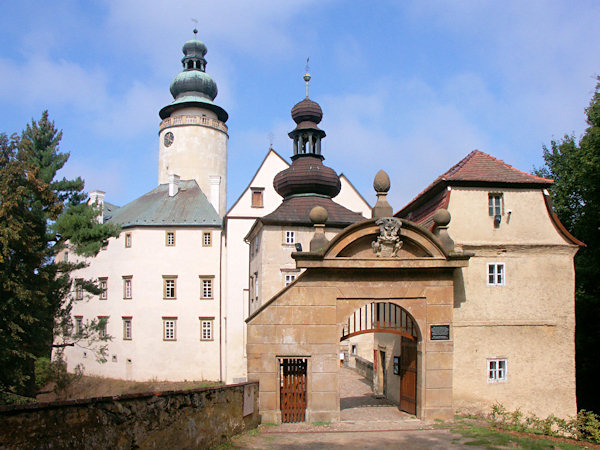Welcome to Lusatian Mountains
... the Lusatian Mountains above all I took to my heart. At first I was suspicious, even ironical. What they are for mountains, when their altitude does not reach the level of the Bohemian-Moravian uplands? But very soon I learnt that they indeed are real mountains, only in a reduced scale. Their peaks project monumentally above the surrounding landscape, the slopes of the highest hills are covered by stony debris, from the woods frequently protrude rocky formations, the ridges and their forks are divided by deep valleys. And all this is wrapped in beautiful woods, in several places containing pristine beech forests. I know of no more beautiful place than the Lusatian Mountains in autumn.
(M. Sovadina, Jizerské a Lužické hory 6/1997)
The Lusatian Mountains (in Czech Lužické hory) are a small mountainous range in Northern Bohemia between Děčín and Liberec. It lies at the border between Germany and the Czech Republic. The smaller German part is called the Zittau Mountains (in German: Zittauer Gebirge).
Geology
Geologically the Lusatian Mountains consist prevailingly of upper Cretaceous sandstone. In many places they are penetrated by Tertiary magmatic rocks, basalts and trachytes, which are more resistant to weathering than the surrounding sandstone. In volcanic necks and domes, therefore, they nowadays project over the surrounding sandstone's. The resulting relief of the Lusatian Mountains, therefore, is characteristic by wooded elongated ridges protruded by pronounced conical necks and rounded hills. In the north the Cretaceous sandstones have a tectonic contact with the granitoid masses of the Lusatian massif, the so-called Lusatian fault. Along of this fault the granitoid rocks were overthrusted over the younger sandstones.
On several places of this fault, e.g. at Doubice, small blocks of Jurassic limestones were drawn to the surface. The Quaternary frequently produced extensive cones of rock debris on the slopes of the volcanic hills. At Jítrava are deposited sediments of the continental ice sheet which at its greatest extent reached as far as the eastern boundary of the hill range. In the 17th and 18th century at a few places low-grade iron ores had been mined. In the surroundings of Jiřetín pod Jedlovou thin veins of low-grade silver-bearing lead-zinc and copper ores were mined.
Hills and waters
The Lusatian Mountains are not very high. Nevertheless, they are an important
climatic boundary separating the northern lowland from the hilly region of central
Bohemia. The highest peak is the Luž (793 m above
sea level) situated directly on the German borders. Other important peaks are,
e. g., Jedlová (774 m), Klíč (760 m), Hvozd (750 m) and Studenec
(736 m).
Thanks to the relatively high precipitations the Lusatian Mountains are rich
in water. Their sources have here the river Kamenice
and its main tributary Chřibská Kamenice and several
tributaries of the Ploučnice river, e.g. the brooks
Sporka, Svitavka, Heřmanický potok. The northern slopes are drained
by the Lužnička brook. The main ridge is part of
the main European divide between the North and the Baltic seas.
Woods
Up to the present time woods cover more than one half of the area of the Lusatian
Mountains. Until the intensive colonisation in the 13th and 14th century they
were overgrown by the impervious bordering forest with prevailing beeches frequently
accompanied by firs. After the 15th century the pristine woods were almost fully
destroyed by the excessive development of glass-works. Later they gradually
were substituted by spruce and pine monocultures. Remainders of the pristine
beech forests are preserved only in separated small enclaves in secluded places
and the hill tops. Today you may find here spruces and pines, and also beeches,
maples, ashes, sometimes limes and elms, in some localities also oaks or alders,
frequently growing along of brooks.
In the eighties the woods were heavily damaged by industrial immissions. During
the last years the atmospheric pollution decreased but, nevertheless, the woods
are invariably endangered and only with difficulty resist the attacks of insect
parasites and unfavourable atmospheric conditions. Their poor condition is clearly
visible mainly in the hills surrounding the Jedlová hill.
Vegetation
In the Lusatian Mountains also grow several characteristic plant species, some of which belong to the species endangered in the Czech Republic. Especially botanically interesting are the flowering beech-forests in the undergrowth of which grow Actaea spicata, Dentaria bulbifera, Dentaria enneaphyllos, Asperula odorata, Lilium martagon, or Lunaria rediviva. Often we may meet also Daphne mezereum. In springtime in some meadows you will find Primula elatior, wet places are inhabited by Leucojum vernum, Valeriana dioica and V. officinalis, Menyanthes trifoliata, Pedicularis palustris, Juncus effusus and several species of Carex.
In a few places the so-called orchidaceous meadows survived with numerous specimens of Dactylorhiza majalis and D. longebracteata, accompanied by the rare Listera ovata, Platanthera bifolia, Orchis mascula, and Epipactis palustris. In clearings in the forests we see the conspicuous Digitalis pupurea spreading into this area from the west. Interesting also is the reported occurrence of the glacial relics Aster alpinus and Woodsia ilvensis - which, however, in the last years were not confirmed. Sporadically also Ledum palustre and Drosera rotundifolia are found.
Animal kingdom
In the fauna of the Lusatian Mountains prevail common species of the woods. Herds of deer, very numerous pigs and also moufflons are living here. A peculiarity is the occurrence of chamois introduced in the first years of the 20th century from the Alps into the surroundings of Děčín. They became perfectly acclimatised and spread from here into the Lusatian Mountains. The mountain fauna is, in accord with the relatively small altitudes, relatively poor. Its representatives are Nucifraga caryocatactes, Glaucidium passerinum, Salamandra salamandra, Lacerta vivipara and Sorex alpinus. Of the birds of prey Buteo buteo and Buteo lagopus were observed. Rarely also Bubo bubo had been nesting here. Recently we could register a spreading of Corvus corax, Crex crex and Ciconia nigra. Of the rarer butterfly species we can meet Papilio machaon, Limenitis populi and Apatura iris. In abandoned old adits several species of bats are hibernating.
Nature conservation
Since 1976 the Lusatian Mountains are protected as a Landscape Reserve. Moreover, twelve of the most valuable localities are declared small Nature Reserves. Natural wood associations are protected in the nature reserves of Jezevčí vrch, Studený vrch and Klíč, valuable is also the nature reserve Vápenka in the Jurassic limestone of Doubice. The only recently proclaimed nature reserves Marschnerova louka and Louka u Brodských are both characterised by the frequent occurrence of orchids, but also other endangered species are found here. Protected is also an unusual great growth of Lunaria rediviva near Líska and a rich occurrence of crocuses at Kytlice. Interesting plants are found also at the Pustý zámek and the Zlatý vrch nature reserves which, however, are renowned primarily as examples of columnar jointing in volcanic rocks.
Geologically interesting are also the sandstone rocks of the Bílé kameny and the Ledová jeskyně (Ice cave) at the north slope of the Suchý vrch hill. Closely beyond the borders of the Protected Landscape there are four additional nature monuments: the bird reserves Světlík and Velký rybník near Rybniště and the geologically interesting nature monuments Panská skála and Dutý kámen. In the region of the Lusatian Mountains there are also several protected trees the most known of which are the yew-trees of Krompach. Also there are some instructional trails. The first leads the visitor along of the morphologically pronounced line of the Lusatian Fault at Jítrava, the second shows the renaturation of a peat-bog destroyed by human intervention at Brazilka whereas the third in the Milířka valley is devoted to the remainders of mining occuring here. A small instruction trail for schools had been opened below the Lemberk-castle near Jablonné v Podještědí.
Points of interest
A very characteristic element of the Lusatian range is the variegated folk architecture. The original type is represented by the timbered house with a special kind of brace-frame construction and small divided windows and with a gable roof. timber framing is used only in the second floor. The gable mostly is decorated by slates of different colours. In the area the ruins of several castles are preserved the most known of which is the Tolštejn castle. Into the ruin of the Kamenický hrad a timbered look-out tower had been constructed. Only very poor remnants of masonry are found in the ruins of the castles Milštejn, Fredevald and Starý Falkenburk. Remarkable are several rock formations (Bílé kameny, Pustý zámek, Zlatý vrch, Dutý kámen and Panská skála, well-known as the "Rock organ" - "Varhany") or the ice cave Ledová jeskyně near Naděje. From many of the hill tops there are very broad views into the surrounding country, especially from the Klíč, Luž, Hvozd and Jedlová. Interesting monuments are found in the towns at the foot of the hills. At Jablonné v Podještědí is the remarkable baroque Dome of St. Laurentius and St. Zdislava, built by Lucas Hildebrandt and not far from here the castle Lemberk, at Česká Kamenice an interesting church. Of particular interest also is the mining town of Jiřetín pod Jedlovou with its place of pilgrimage Křížová hora or Chřibská with the oldest still working glass factory in Europe.
Tourism
More than one hundred years ago by the activities of several tourist associations made the Lusatian Mountains accessible for hiking and tourism. Their members constructed and adapted a great number of paths and view points, built many lookout towers, chalets and mountain restaurants. After 1945, however, most of these buildings burnt out or, without the necessary maintenance, finally fell to pieces. Only in the last several years the situation seems to improve. Thanks to the growing interest of the inhabitants and the visitors the Lusatian Mountains gradually again grow into a picturesque landscape. In the towns and villages we see more and more pretty houses, and after restoration the characteristic old chapels and sculptures of the catholic saints and the crucifixes gradually return to their places on the paths and roads. In 1993 the stone look-out tower at Jedlová and two years later also the neighbouring restaurant were repaired and reopened. In 1998 also the timber-construction of the look-out tower in the ruin of the Kamenický hrad castle was re-established. At the last minute the unique steel look-out tower at the Studenec was prevented from demolishing. The Lusatian Mountains, nevertheless continue to be a region relatively well-preserved area with many diverse opportunities for holiday-making, hiking and skiing.
Small Gallery of Lusatian Mountains
More pictures you may find on the Picture gallery.
Contact:
Author of the pages: Jiří Kühn
e-mail: kuhn@natur.cuni.cz
Translation: Petr Kühn
Administration of the Protected Landscape Area Lusatian Mountains:
Správa CHKO Lužické hory, Školní 12, CZ-471 25 Jablonné v Podještědí
e-mail: luzhory@nature.cz
